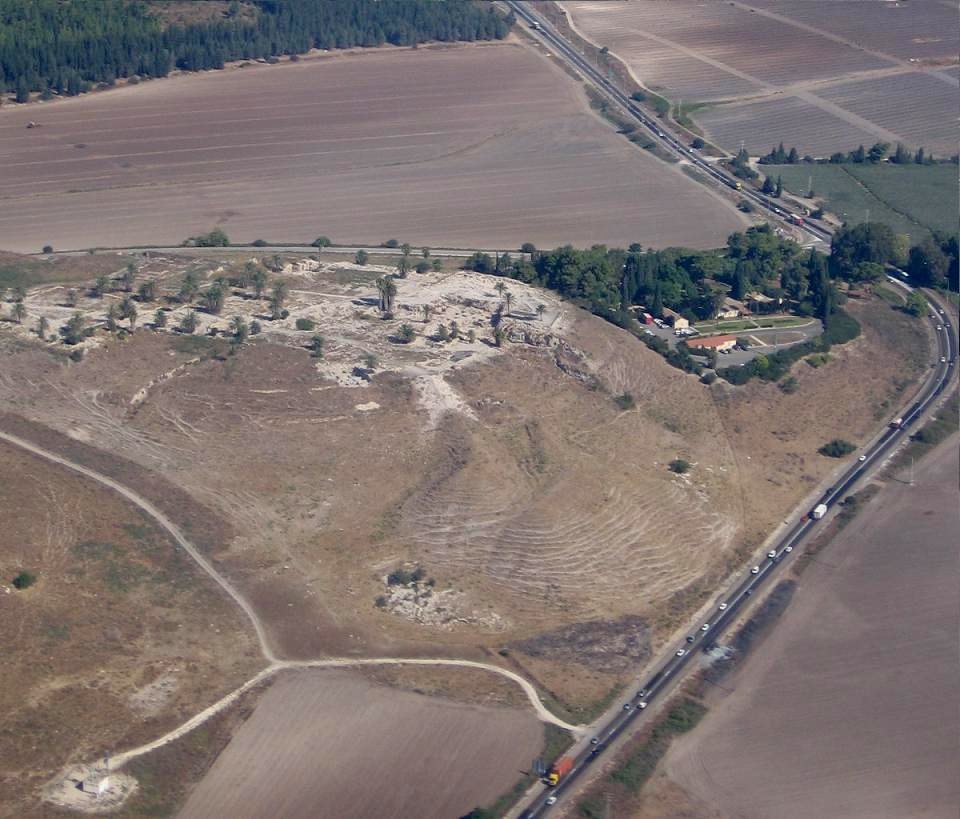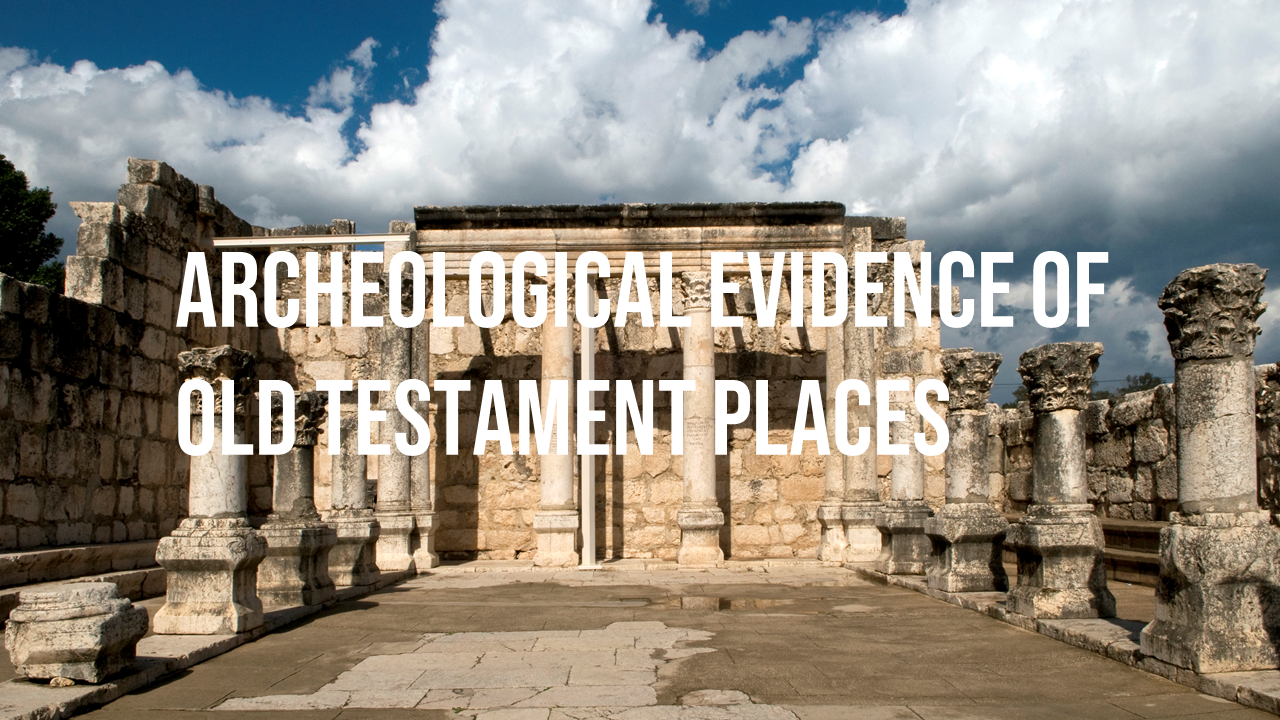
Real Places, Real Stuff…Real History !
The City Of Pi Ramesses (Genesis, Exodus Numbers)
Ramesses II was born and raised in the area, and family connections may have played a part in his decision to move his capital so far north; but geopolitical reasons may have been of greater importance, as Pi-Ramesses was much closer to the Egyptian vassal states in Asia and to the border with the hostile Hittite empire. Intelligence and diplomats would reach the pharaoh much more quickly, and the main corps of the army were also encamped in the city and could quickly be mobilized to deal with incursions of Hittites or Shasu nomads from across the Jordan.
The forty-seventh chapter of the biblical Book of Genesis states that the Hebrews were given the Land of Goshen to reside in but also that Joseph settled his father and brothers in the best part of the land, in the land of Rameses. The Book of Exodus mentions “Ramesses” as one of the cities on whose construction the Israelites were forced to labor (Exodus 1:11) and from where they departed on their Exodus journey (Exodus 12:37 and Numbers 33:3). Understandably, this Ramesses was identified by biblical archaeologists[9] of the nineteenth century with the Pi-Ramesses of Ramesses II.
This was the time when Joseph, through the command of Pharaoh, brought his father and siblings to the land of Egypt that was called the land of Rameses. Genesis 47:11
The Israelites, as slaves, worked under tight taskmasters’ commands to build the treasure cities of Pharaoh, the Pithom and the Rameses.
Exodus 1:11
This passage in the Bible pertains to the time when the Israelites from Rameses departed Egypt on the 15th day of the first month in the morning of the Passover feast. Numbers 33:3
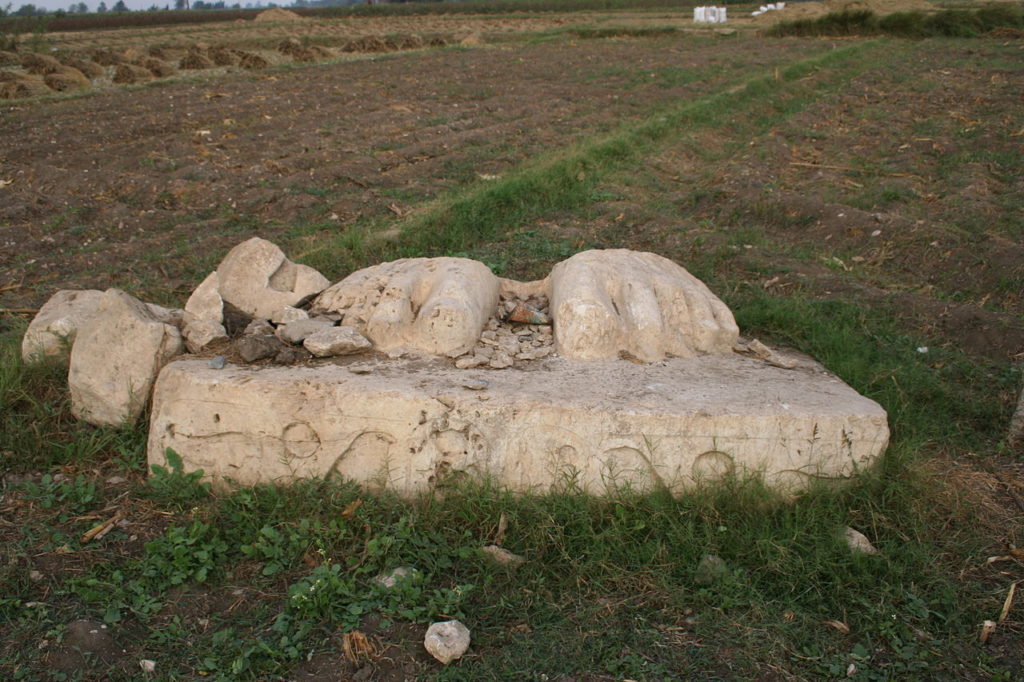
The Beka Stone (Genesis, Exodus)
An extremely rare, minuscule biblical stone weight inscribed in ancient Hebrew script with the word “beka” was discovered in rubble taken from excavations at the foundations of the Western Wall.
Only a handful of similar stone beka weights have been unearthed in Jerusalem, said archaeologist Eli Shukron, who directed the excavations on behalf of the Israel Antiquities Authority. He told The Times of Israel that none had previously been found with this exact inscription.
The “beka,” a First Temple-period weight measure used by pilgrims paying their half-shekel tax before ascending to the Temple Mount, was recently discovered by a volunteer in the City of David’s wet sifting project in Jerusalem’s Emek Tzurim National Park.
The word “beka” appears twice in the Torah: first as the weight of gold in a nose ring given to matriarch Rebecca in the Book of Genesis, and later in the Book of Exodus as a weight for the donation brought by the Jewish people for the maintenance of the Temple and the census, as recorded in Exodus 38:26
A beka a head (that is, half a shekel, by the shekel of the sanctuary), for everyone who was listed in the records, from twenty years old and upward, for 603,550 men.
Exodus 38:26
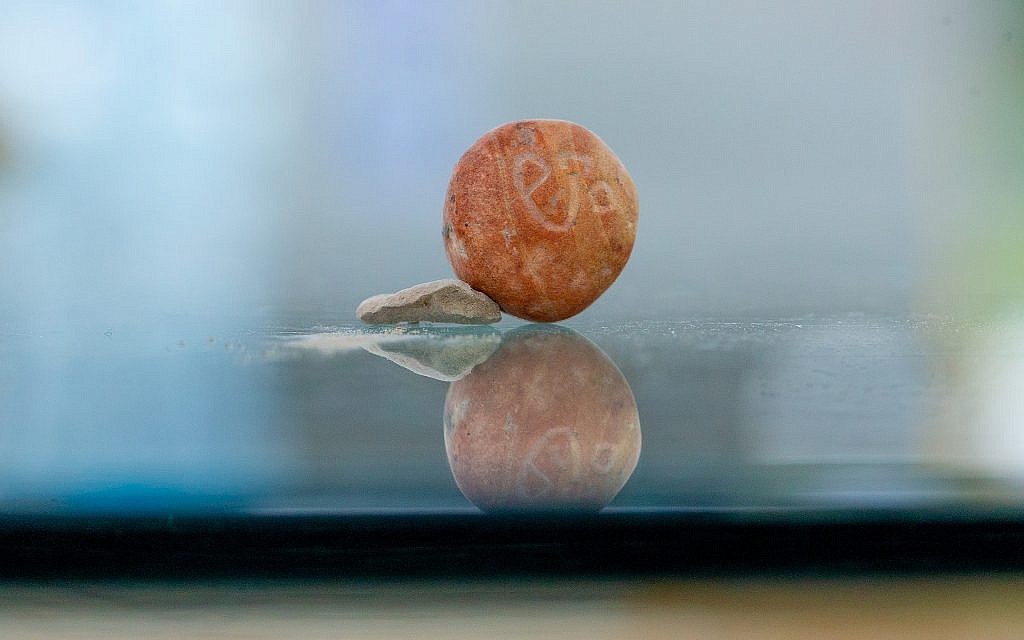
The Siege Of Lachish (Isaiah 36:1-2)
In 1847, Austen Henry Layard discovered Assyrian king Sennacherib’s palace wall relief in Nineveh, which depicted his siege of Lachish. This discovery was the first of its kind; it sent shock waves through England since it confirmed an event described in the Bible. Today, in southern Israel at Lachish, Sennacherib’s earthen siege ramp is still visible. (The Popular Handbook of Archaeology and The Bible Discoveries, Location 819 Kindle Edition)
Now it came about in the fourteenth year of King Hezekiah, Sennacherib king of Assyria cam up against all the fortified cities of Judah and seized them. And the king of Assyria sent Rabshakeh from Lachish to Jerusalem to King Hezekiah with a large army. And he stood by the conduit of the upper pool on the highway of the fuller’s field.
Isaiah 36:1-2
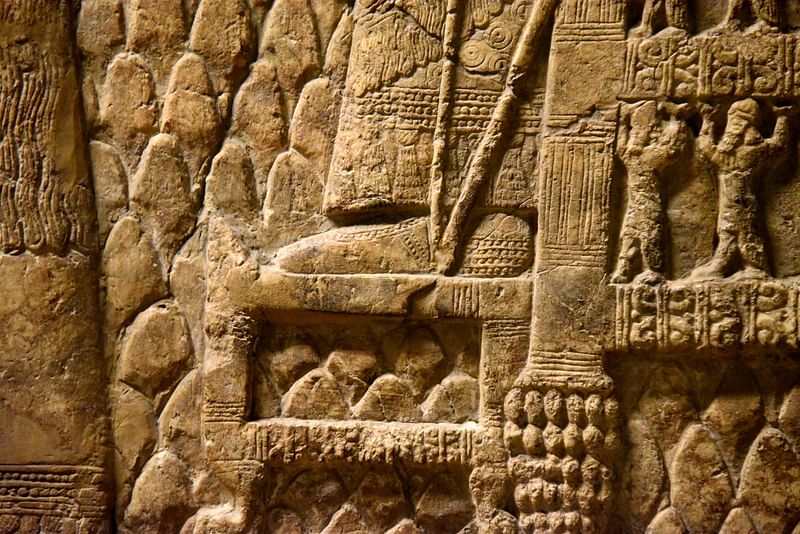
The City Of Beth-Shan And King Saul (1 Samuel 31:8-13)
The biblical city of Beth Shan has been excavated since the 1920s and 1930s and has revealed an occupation beginning from approximately 4500 BC and extending to the eleventh century AD. It is the location where the bodies of King Saul and his sons were fastened on the city walls (1 Samuel 31:8-13) after their deaths in battle with the Philistines. The temple unearthed at the site also may be the Temple of Dagon, where Saul and Jonathan’s armor and heads were exhibited (1 Chronicles 10:10). In addition, Beth Shan was also known as Scythopolis, one of the ten cities of the Decapolis in the first century AD. Today, nine of the ten cities of the Decapolis in Matthew 4:25, Mark 5:20, 7:31 have been positively identified.
Joseph M. Holden;Norman Geisler. The Popular Handbook of Archaeology and the Bible: Discoveries That Confirm the Reliability of Scripture (Kindle Locations 820-825)
And it came about on the next day when the Philistines came to strip the slain, that they found Saul and his three sons fallen on Mount Gilboa. And they cut off his head, and stripped off his weapons, and sent them throughout the land of the Philistines, to carry the good news to the house of their idols and to the people. And they put his weapons in the temple of Ashtaroth, and they fastened his body to the wall of Beth-shan. Now when the inhabitants of Jabesh-gilead heard what the Philistines had done to Saul, all the valiant men rose and walked all night, and took the body of Saul and the bodies of his sons from the wall of Beth-shan, and they came to Jabesh, and burned them there. And they took their bones and buried them under the tamarisk tree at Jabesh, and fasted seven days.
1 Samuel 31:8-13
And great multitudes followed Him from Galilee and Decapolis and Jerusalem and Judea and from beyond the Jordan
Matthew 4:25
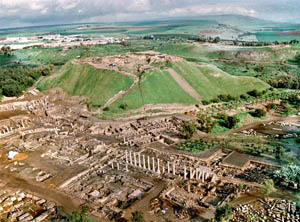
King Solomon’s Wall
The tenth-century B.C. wall is 230 feet (70 meters) long and about 6 meters (20 feet) tall. It stands along what was then the edge of Jerusalem—between the Temple Mount, still Jerusalem’s paramount landmark, and the ancient City of David, today a modern-day Arab neighborhood called Silwan.
The stone barrier is part of a defensive complex that includes a gatehouse, an adjacent building, and a guard tower, which has been only partially excavated, according to Eilat Mazar, who led the dig for the Hebrew University of Jerusalem.
Over the years, the structures have been partially demolished—their building materials scavenged for later structures—and what remained was buried under rubble, Mazar said.
The Bible’s First Book of Kings—widely believed to have been written centuries after the time period in question—says Solomon, king of Israel, built a defensive wall in Jerusalem. The new discovery is the first archaeological evidence of this structure, Mazar says.
National Geographic, Mati Milstein February 27,2010
Solomon made an alliance with Pharaoh king of Egypt and married his daughter. He brought her to the City of David until he finished building his palace and the temple of the LORD, and the wall around Jerusalem
1 Kings 3:1
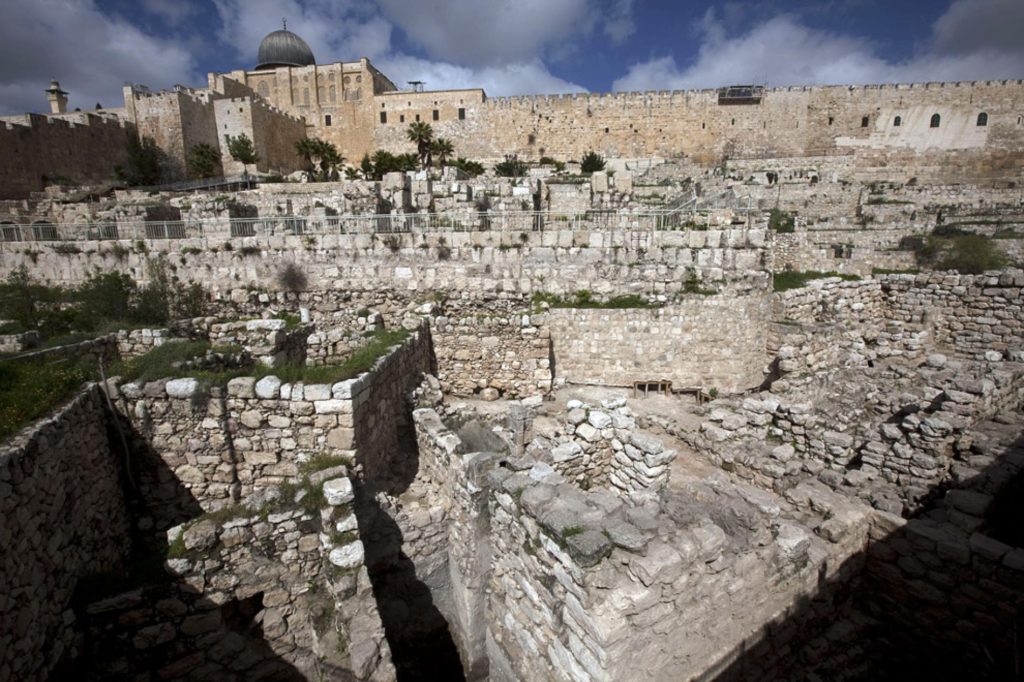
King Solomon’s Mines
MANURE PRESERVED FOR millennia by the arid climate of Israel’s Timna Valley is adding fresh fuel to a long-simmering debate about the biblical king Solomon and the source of his legendary wealth.
Archaeologists discovered the 3,000-year-old dung in an ancient mining camp atop a sandstone mesa known as Slaves’ Hill. The area is dotted with copper mines and smelting camps—sites where the ore was heated and turned into metal. High-precision radiocarbon dating of the dung, as well as textiles and other organic material, showed that the mining camp’s heyday was the 10th century B.C.—the era of the biblical kings David and Solomon.
According to the Hebrew Bible, King Solomon was renowned for his great wisdom and wealth, and his many building projects included a temple in Jerusalem lavishly appointed with gold and bronze objects. Such a structure would have required large amounts of metal from industrial-scale mining operations.
National Geographic: Michelle Z. Donahue April 2, 2017
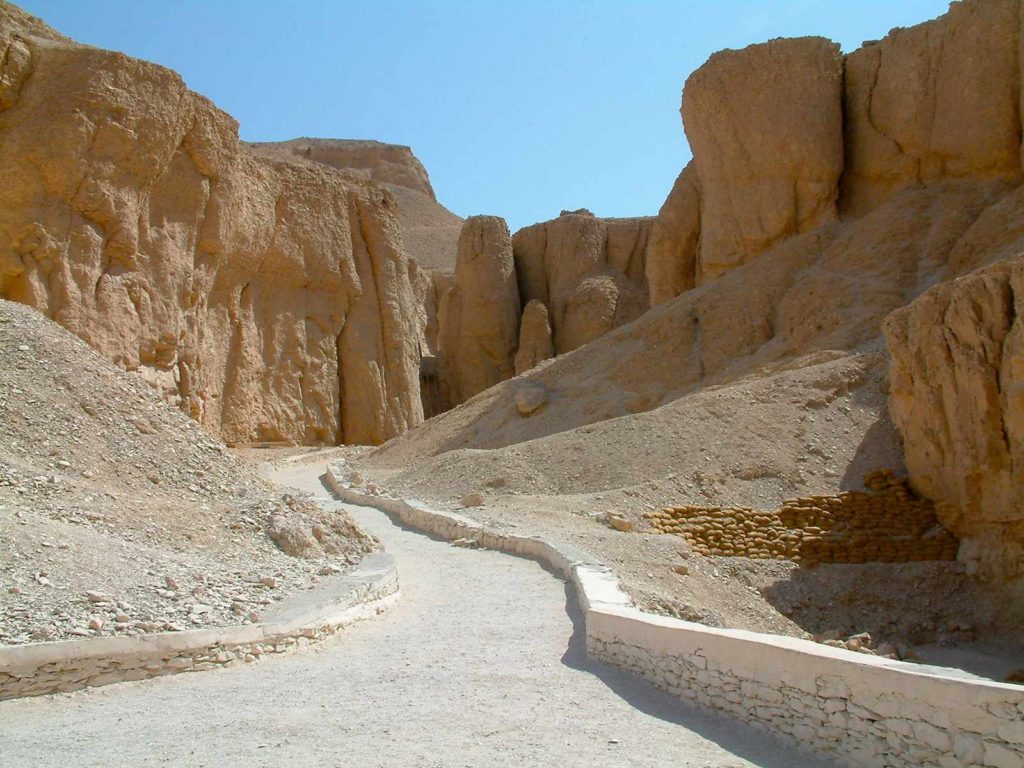
Wall Of Rehoboam
An archaeologist has recently uncovered a fortified wall in the ancient city of Lachish, a discovery he said shores up the biblical account of the site and suggests that a centralized kingdom ruled by King David and his descendants was founded and expanded earlier than previously believed.
The discovery, he argued, bolsters the biblical account in the book of Chronicles of the city under 10th century BCE King Rehoboam’s reign. Using carbon dating, the site was pegged to the 10th century.
“We looked in three places, and ultimately, in the northern section, we found a wall between Layer 6 and Layer 4. Later the excavators reached a floor that stretches to the wall, which could be dated using olive pits found beneath the floors. Samples of the pits were sent to the particle accelerator at Oxford, which ruled that the wall had been built around 920 B.C.E., which was exactly the rule of Rehoboam, son of Solomon and grandson of David.”
Professor Yosef Garfinkel, Head of Hebrew University Of Jerusalem Institute of Archaeology : Courtesy thetimesofisrael.com
Rehoboam lived in Jerusalem and built cities for defense in Judah. Thus he built Bethlehem, Etam, Tekoa, 7 Beth-zur, Soco, Adullam, Gath, Mareshah, Ziph, Adoraim, Lachish, Azekah, Zorah, Aijalon, and Hebron, which are fortified cities in Judah and in Benjamin. He also strengthened the fortresses and put officers in them and stores of food, oil and wine.
2 Chronicles 11:5-11

The Fallen Walls And The City Of Jericho
After years of doubt among archaeologists, a new analysis of excavations has yielded a wide range of evidence supporting the biblical account about the fall of Jericho. It may well be true that, in the words of the old spiritual, ”Joshua fit the battle of Jericho, and the walls come tumbling down.”
A study of ceramic remnants, royal scarabs, carbon-14 dating, seismic activity in the region and even some ruins of tumbled walls produced what is being called impressive evidence that the fortified city was destroyed in the Late Bronze Age, about 1400 B.C.
The prevailing view among scholars has been that the city was destroyed some 150 years earlier and thus did not exist at the time of the Israelite invasion, which is believed to have occurred no earlier than 1400 B.C.
”When we compare the archeological evidence at Jericho with the biblical narrative describing the Israelite destruction of Jericho, we find a quite remarkable agreement,” Dr. Bryant G. Wood, an archeologist at the University of Toronto, wrote in the March-April issue of Biblical Archeology Review. (The New York Times, John Noble Wilford, February 22, 1990)
And the LORD said to Joshua, “See, I have given Jericho into your hand, with its king and the valiant warriors. 3 “And you shall march around the city, all the men of war circling the city once. You shall do so for six days. 4 “Also seven priests shall carry seven trumpets of rams’ horns before the ark; then on the seventh day you shall march around the city seven times, and the priests shall blow the trumpets. 5 “And it shall be that when they make a long blast with the ram’s horn, and when you hear the sound of the trumpet, all the people shall shout with a great shout; and the wall of the city will fall down flat, and the people will go up every man straight ahead.”
Joshua 6:2-5
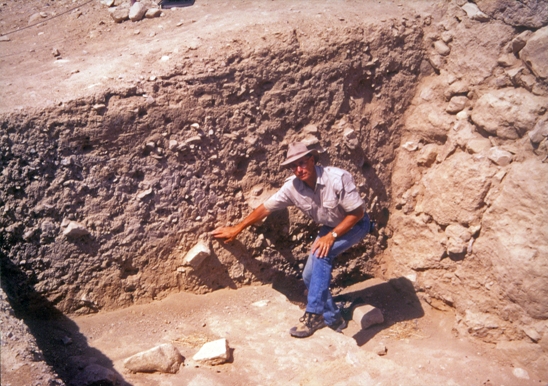
Qumran National Park (The Dead Sea Scrolls)
Qumran is an archaeological site in the West Bank. It is located about 1 mile from the nortwestern shore of the Dead Sea. The Helenistic period settlement was constructed during the reign of John Hyrcanus (ca. 134-104 BC) and was occupied most of the time until 68 AD and was destroyed by the Romans possibly as late as 73 AD.
Since the discovery of the Dead Sea Scrolls in 1947–1956, extensive excavations have taken place in Qumran. Nearly 900 scrolls were discovered. Most were written on parchment and some on papyrus. Cisterns, Jewish Ritual Baths, and cemetaries have been found, along with a dining or assembly room and debris from an upper story alleged by some to have been a scriptorium as well as pottery kilns and a tower.
About 230 manuscripts are referred to as “biblical Scrolls”. These are copies of works that are now part of the Hebrew Bible. Among the Scrolls are partial or complete copies of every book in the Hebrew Bible (except the book of Esther). Many biblical manuscripts closely resemble the Masoretic Text, the accepted text of the Hebrew Bible from the second half of the first millennium ce until today. This similarity is quite remarkable, considering that the Qumran Scrolls are over a thousand years older than previously identified biblical manuscripts.
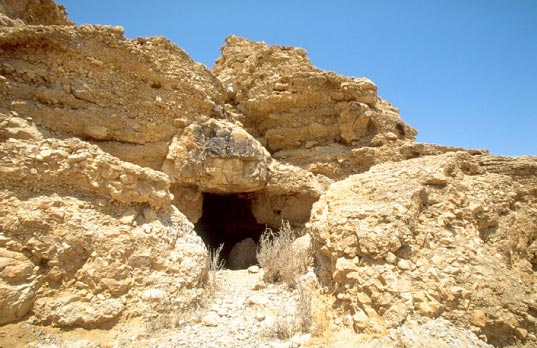
The Ziggurat At Ur
The remains of a massive ziggurat located at the biblical city of Ur (now Tell al-Muqayyar) were discovered in 1924 by Sir Leonard Woolley. This was a structure Abraham would have been familiar with (Genesis 11:1-9,27-29). Its discovery also supports the plausibility of the Tower of Babel events mentioned in Genesis 11:1-9.
Joseph M. Holden;Norman Geisler. The Popular Handbook of Archaeology and the Bible: Discoveries That Confirm the Reliability of Scripture (Kindle Locations 837-839). Kindle Edition.
And Terah took Abram his son, and Lot the son of Haran, his grandson, and Sarai his daughter-in-law, his son Abram’s wife; and they went out together from Ur of the Chaldeans in order to enter the land of Canaan.
Genesis 11:31
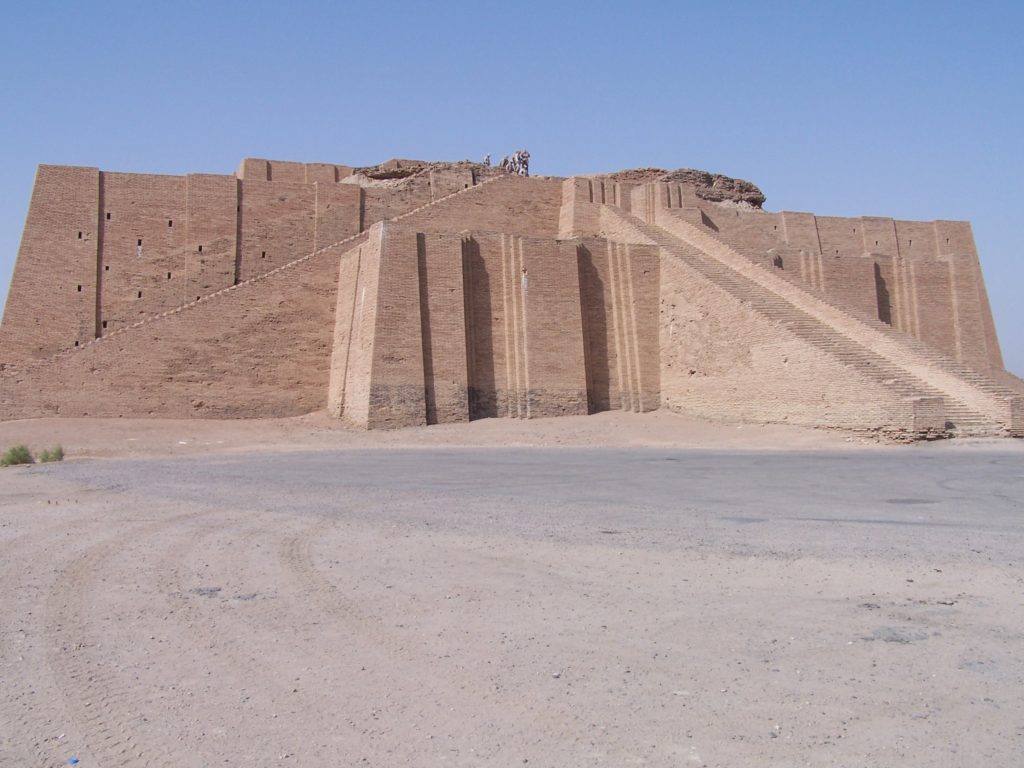
Royal Steward Inscription And Shebna
In 1870, Charles Clermont-Ganneau located a tomb lintel inscription in Jerusalem, adjacent to the Temple Mount near the Kidron Valley. The partial tial name inscribed on the lintel appears to be that of an eighth-century BC biblical figure named Shebna. According to the inscription, Shebna was the steward over the household of King Hezekiah. Isaiah mentions this man as living above his means and says he carved out a tomb for himself in a very conspicuous place (Isaiah 22:15-19). The words of the inscription implore passersby to not open the tomb since no silver or gold was contained inside.
Joseph M. Holden;Norman Geisler. The Popular Handbook of Archaeology and the Bible: Discoveries That Confirm the Reliability of Scripture (Kindle Locations 839-842). Kindle Edition.
Thus says the Lord God of hosts, “Come, go to this steward, to Shebna, who is in charge of the royal household”
Isaiah 22:15
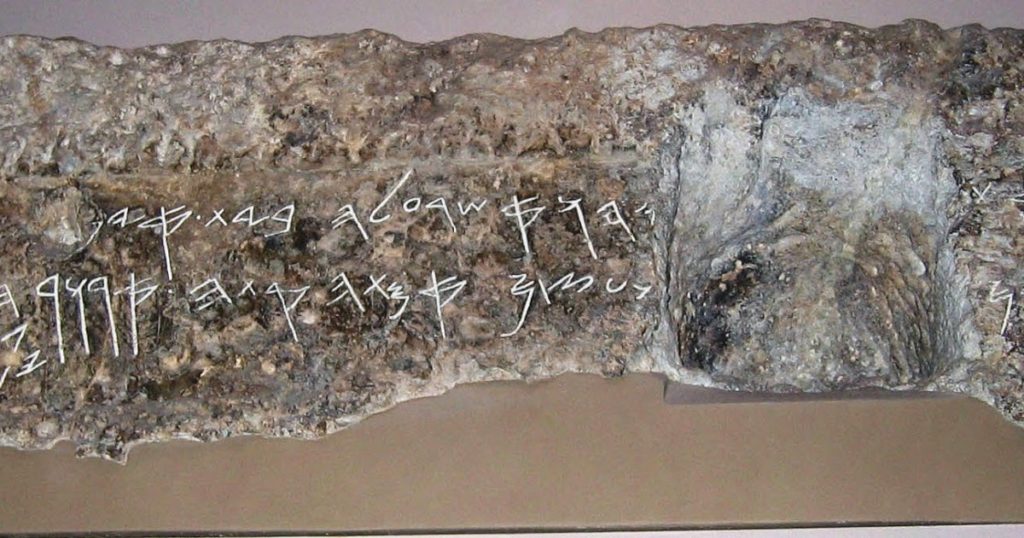
Place, Event, And People That Existed : The Battle Of Megiddo (609 BC)
Pharoah Necho II
King Josiah Of Judah (c. 640-609 BC)
The Battle of Megiddo is recorded as having taken place in 609 BC when Pharaoh Necho II of Egypt led his army to Carchemish (northern syria) to join with his allies, the fading Neo-Assyrian Empire, against the surging Neo-Babylonian Empire. This required passing through territory controlled by the Kingdom of Judah. The Judaean king Josiah refused to let the Egyptians pass. The Judaean forces battled the Egyptians at Megiddo, resulting in Josiah’s death and his kingdom becoming a vassal state of Egypt. The battle is recorded in 2 Kings 23:29-30 and in the writings of the historian Josephus.
In his days Pharaoh Necho king of Egypt went up to the king of Assyria to the river Euphrates. And King Josiah went to meet him, and when Pharaoh Necho saw him he killed him at Megiddo. And his servants drove his body in a chariot from Megiddo, and brought him to Jerusalem and buried him in his own tomb.
2 Kings 23:29-30
How We Know : Location Of The Battlefield Discovered
